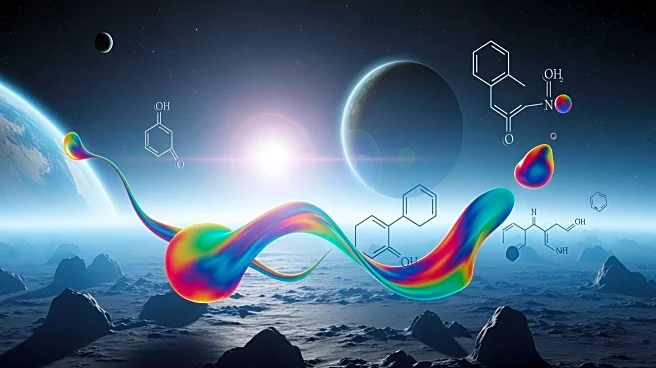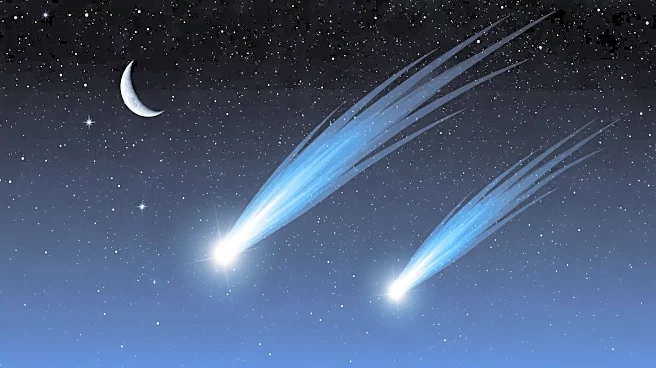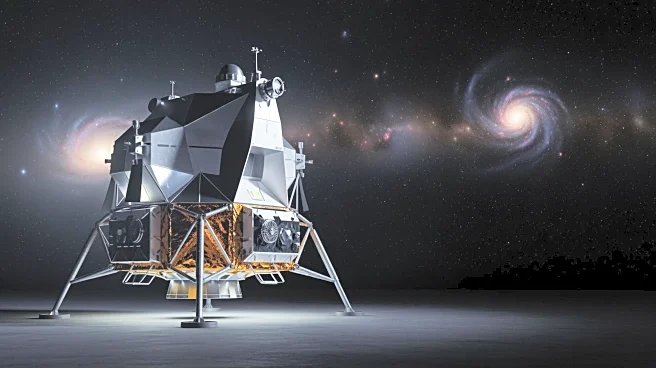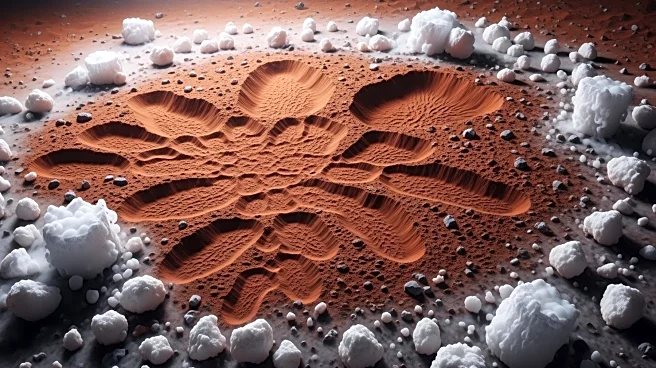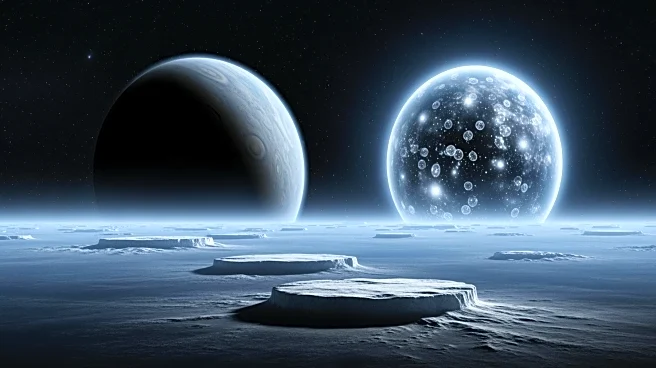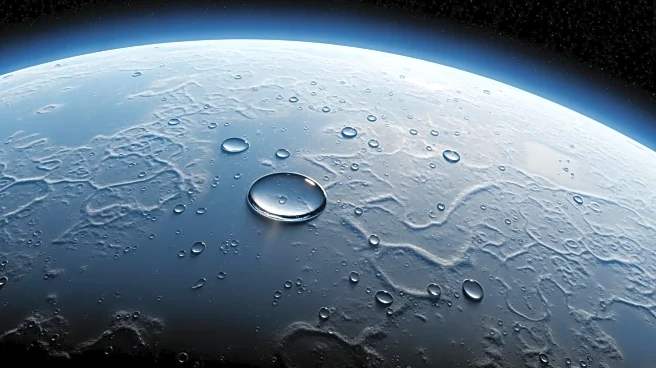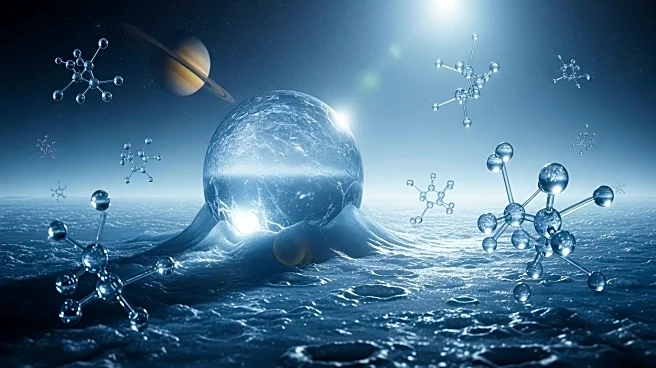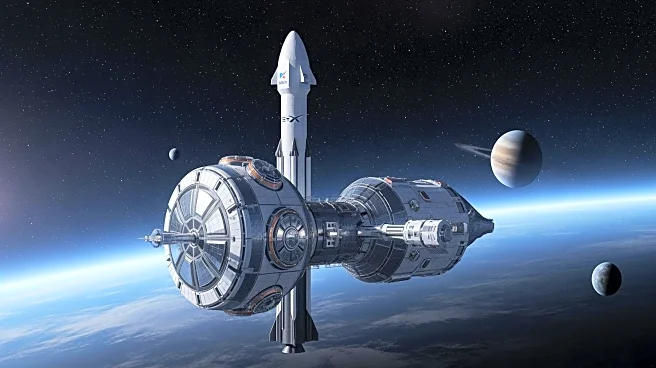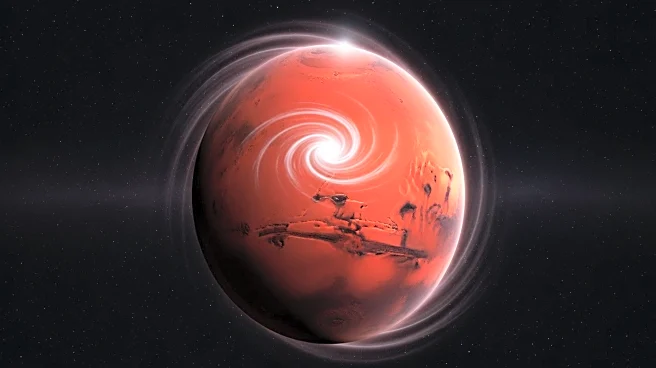What's Happening?
New research has uncovered unexpected molecular interactions on Saturn's moon Titan, where nonpolar hydrocarbons like methane and ethane mix with the polar compound hydrogen cyanide (HCN). This challenges the established chemical rule that polar and nonpolar compounds
do not spontaneously mix. The study suggests that these interactions could occur at Titan's low temperatures, potentially reshaping our understanding of chemical processes in diverse environments across the solar system.
Why It's Important?
The discovery of these chemical interactions on Titan is significant as it expands our understanding of chemistry beyond Earth. It suggests that extreme environments like Titan could host unique chemical processes that may inform our understanding of life's origins. This research could influence future studies in planetary science and astrobiology, as scientists explore the potential for life in non-Earthlike conditions.
What's Next?
NASA's Dragonfly mission to Titan, scheduled to launch in 2028, will further investigate the moon's surface chemistry. The mission aims to measure the compositions of materials on Titan's surface, providing insights into prebiotic chemistry and the potential for life. Researchers will continue to explore the implications of these chemical interactions for Titan's geology and atmospheric processes.
Beyond the Headlines
The findings on Titan challenge traditional chemical principles, suggesting that extreme environments could host unique chemical processes. This discovery may prompt discussions on the potential for life in non-Earthlike conditions and the ethical implications of exploring extraterrestrial environments. The research highlights the importance of expanding our understanding of chemistry to include diverse planetary environments.
